Table of Contents
As of late-May 2019, Asus announced its updated mainstream ZenBook line, laptops you’ll find in stores in the second part of 2019 and the first part of 2020.
The update affects the entire lineup of 13 (ZenBook UX334), 14-inch (ZenBook UX434) and 15-inch (ZenBook UX534) devices, with a hardware refresh and new graphics chips, faster storage and wireless, as well as the implementation of a multifunctional ScreenPad across the entire range, a feature we’ve previously seen on the higher-tier ZenBook Pro UX580.
These add up to the characteristics of the previous late-2018 ZenBook notebooks: the ultracompact form-factors with narrow bezels around the screens, good keyboards, nice aesthetics, fair battery life, and competitive prices in most regions, which make-up for some of the existing quirks. And there were quite a few to compensate for, especially on the smaller UX333 and UX433 variants, as you can find out from the reviews.
Of course, there are many questions I can’t answer in this preview article, like whether they addressed the performance on the 13/14-inch models, whether they implemented better screens and why there’s still no Thunderbolt 3 support, but we’ll touch on those in our future reviews. In the meantime, let’s go through the specs sheets and see what we can find out when comparing these new ZenBooks to their predecessors.
Asus ZenBook 15 UX534FT
Update: We’ve reviewed the ZenBook 14 UX534FT and UX534FTC in this more detailed article, check it out.
| Asus ZenBook UX534FT – review | Asus ZenBook UX533FD – review | |
| Screen | 15.6-inch – FHD or UHD, matte or glossy, 92% screen-to-body ratio | 15.6-inch – FHD 300 nits or UHD, matte or glossy, 92% screen-to-body ratio |
| Processor | up to Core i7-8565U | up to Core i7-8565U |
| Video | Intel UHD 620 + Nvidia GTX 1650 4 GB Max-Q, with Optimus | Intel UHD 620 + Nvidia GTX 1050 2/4 GB Max-Q, with Optimus |
| Memory | up to 16 GB LPDDR3 (soldered) | up to 16 GB LPDDR3 (soldered) |
| Storage | 1x M.2 256/512 GB PCIe x2 or 1 TB PCIe x4 | 1x M.2 256/512 GB PCIe x2 |
| Ports | 2x USB-A 3.1, 1x USB-C gen 2, HDMI, SD card-reader, mic/earphone | 2x USB-A 3.1, 1x USB-C gen 2, HDMI, SD card-reader, mic/earphone |
| Battery | 71 Wh, 120W charger | 73 Wh, 90W charger |
| Size | 354 mm or 13.93” (w) x 220 mm or 8.66” (d) x 18.9 mm or 0.74” (h) | 354 mm or 13.93” (w) x 220 mm or 8.66” (d) x 17.9 mm or 0.70” (h) |
| Weight | ~1.55 kg (3.4 lbs) for the matte version, 1.65 for glossy | ~1.55 kg (3.4 lbs) for the matte version |
| Others | backlit keyboard, glass ScreenPad with FHD+ IPS panel, IR Hello cameras, 2×2 Wi-Fi 5 with Bluetooth 5, only available in Blue | backlit keyboard, glass clickpad, IR Hello cameras, 2×2 Wi-Fi AC with Bluetooth 5 |
Much like the others, the 15-inch 2019 ZenBook 15 UX534FT is pretty much a hardware bump of the previous ZenBook 15 generation. That’s fine, though, as the UX533FD was actually the best product in the late-2018 ZenBook line-up, but whether the minor updates are enough to tackle the nowadays’ competition, well, that’s something to be seen.
From what we know so far, Asus did not update the screen choices, so we’re still stuck with a middling 300-nits FHD panel on most variations, good enough for indoor use, but something you’ll struggle with in brighter environments. There’s also a 4K screen option listed for the UX534FT, and although that was also offered for the UX533, most stores only carried the FHD configurations, so there’s still a good chance the UHD screen won’t be an option in your region.
Nothing has changed in terms of design and port selection, as there’s still no Thunderbolt 3 support. According to the official specs, though, the updated UX533FT is slightly thicker than the older model, gets a smaller battery and a larger charger, which could suggest a slight internal redesign. No word on whether the RAM is still soldered, but I’d reckon it still is, and there’s still only one M.2 storage slot. As a side note, Asus tends to ship their products with PCIe x2 SSDs and you’ll have to jump to the 1 TB options to get a PCIe x4 stick out-of-the-box, which is imo an unfortunate cost-cutting strategy that could drive users away.
The addition of a ScreenPad is one of the major changes between generations and something Asus are heavily promoting in their marketing materials. I’ve seen it in action on the ZenBook Pro and it’s a nice feature, but whether it’s something you’ll actually use on a daily basis depends on software. Back in 2018, you couldn’t do much with the ScreenPad, but in the meantime, it looks like it integrates well with some of the Windows apps, Office, Spotify and Evernote, and Asus works with third-party developers to add adaptive functionality into the Screenpad, based on the app that you’re running. If that happens, such Screenpads could become a must on future devices, but there are several IFs involved here.
The elephant in the room is the updated Nvidia GTX 1650 Max-Q GPU, the same chip you’ll find on other compact 15-inch devices like the updated Dell XPS 15 or the 2nd generation Lenovo ThinkPad X1 Extreme. There are no detailed reviews of this chip yet, so we can’t comment on the performance and thermals, but judging by the fact that this laptop ships with a 120W charger, it most likely draws more power than the GTX 1050 Max-Q in the 2018 model, so will be more difficult to keep cool. Anyway, that’s something we’ll focus on in our detailed review, as well as thermals and acoustics, both strong points of the previous variant and hopefully still strong-points of the 2019 update.
All in all, the 2019 ZenBook 15 UX534FT seems like a slightly polished variant of the 2018 model, with the same design, screens, keyboard and IO, but with a ScreenPad and updated graphics. With the right price and if Asus keeps the GPU and their known quality control issues in check this time around, I expect this to be a popular option in its tier in the months to come, but those with a larger budget might prefer devices like the brand-new ZenBook Duos or even the 2019 variants of the XPS 15 and X1 Extreme.
Asus ZenBook 14 UX434FT
| Asus ZenBook UX434FL – review | Asus ZenBook UX433 FA/FN – review | |
| Screen | 14.0-inch – FHD matte or glossy, 95% screen-to-body ratio | 14.0-inch – FHD matte or glossy, 95% screen-to-body ratio |
| Processor | up to Core i7-8565U | up to Core i7-8565U |
| Video | Intel UHD 620 + Nvidia MX250 10DE 1D13 2 GB variant, with Optimus | Intel UHD 620 + Nvidia MX150 2 GB 10DE 1D12 variant, with Optimus |
| Memory | up to 16 GB LPDDR3 (soldered) | up to 16 GB LPDDR3 (soldered) |
| Storage | 1x M.2 256/512 GB PCIe x2 or 1 TB PCIe x4 | 1x M.2 256/512 GB PCIe x2 or 1 TB PCIe x4 |
| Ports | 2x USB-A 3.1, 1x USB-C gen 2, HDMI, microSD, mic/earphone | 2x USB-A 3.1, 1x USB-C gen 2, HDMI, microSD, mic/earphone |
| Battery | 50 Wh, 65W charger | 50 Wh, 65 W charger |
| Size | 319 mm or 12.55” (w) x 199 mm or 7.83” (d) x 16.9 mm or .66” (h) | 319 mm or 12.55” (w) x 199 mm or 7.83” (d) x 15.9 mm or .63” (h) |
| Weight | ~1.26 kg (2.75 lbs) for glossy, 1.15 kg for the matte version | ~1.23 kg (2.7 lbs) for glossy, 1.1 kg for the matte version |
| Others | backlit keyboard, larger glass ScreenPad with FHD+ IPS panel, IR Hello cameras, 2×2 Wi-Fi 5 with Bluetooth 5, only available in Blue | backlit keyboard, glass clickpad, IR Hello cameras, 2×2 Wi-Fi AC with Bluetooth 5, available in Blue or Silver |
The updated ZenBook 14 UX434FL is another hardware bump with two important changes over the previous ZenBook 14 models: gets the Screenpad and an Nvidia MX250 graphics chip.
Update: Our review of the ZenBook UX434FL is in this dedicated article.
Based on our experience with the 2018 ZenBook 14 UX433FN, I expect a lot of interest around this updated variant, as it’s a sweet spot for performance and portability.
Just keep in mind that the implemented 10W MX250 is just a minor update of the 10W MX150 in the previous generation, and carefully look for reviews that analyze the performance if you’re planning to run games on this computer, as our gaming experience has been problematic on the two different versions of the UX433 we’ve tested.
I for one am really looking forward to find-out if Asus managed to improve the cooling and thermals on the 2019 update, in order to cope with the demands of the MX250 chip. Judging by the design, though, I doubt much has changed, so I’d still expect the 14-inch ZenBook S UX392 to be the better performer in this range and my go-to option if you’re willing to ditch the ScreenPad and up your budget, especially when considering the other benefits, like the brighter screen, sturdier construction and USB-C charging.
But let’s refrain on suppositions for now, and wait for the review to draw conclusions.
Asus ZenBook 13 UX334FL 30-year Edition
| Asus ZenBook UX334FL | Asus ZenBook UX333FN – review | |
| Screen | 13.3-inch – FHD glossy, 95% screen-to-body ratio | 14.0-inch – FHD 250-nits matte or glossy, 95% screen-to-body ratio |
| Processor | up to Core i7-8565U | up to Core i7-8565U |
| Video | Intel UHD 620 + Nvidia MX250 10DE 1D13 2 GB variant, with Optimus | Intel UHD 620 + Nvidia MX150 2 GB 10DE 1D12 variant, with Optimus |
| Memory | up to 16 GB LPDDR3 (soldered) | up to 16 GB LPDDR3 (soldered) |
| Storage | 1x M.2 256/512 GB PCIe x2 or 1 TB PCIe x4 | 1x M.2 256/512 GB PCIe x2 or 1 TB PCIe x4 |
| Ports | 2x USB-A 3.1, 1x USB-C gen 2, HDMI, microSD, mic/earphone | 2x USB-A 3.1, 1x USB-C gen 2, HDMI, microSD, mic/earphone |
| Battery | 50 Wh, 65 W charger | 50 Wh, 65 W charger |
| Size | 302 mm or 11.88” (w) x 189 mm or 7.44 (d) x 18.5 mm or .73” (h) | 302 mm or 11.88” (w) x 189 mm or 7.44 (d) x 16.9 mm or .66” (h) |
| Weight | ~1.29 kg (2.8 lbs) for glossy, 1.1 kg for the matte version | ~1.23 kg (2.7 lbs) for glossy, 1.1 kg for the matte version |
| Others | backlit keyboard, larger glass ScreenPad with FHD+ IPS panel, IR Hello cameras, 2×2 Wi-Fi 5 with Bluetooth 5 | backlit keyboard, glass clickpad, IR Hello cameras, 2×2 Wi-Fi AC with Bluetooth 5, only available in Blue |
There are a few reasons why the 13-inch ZenBook 13 was my least-favorite model in the 2018 lineup: it was just a little bit smaller than the 14-inch variant, but looked the same, performed poorer, came with a dimmer 250-nits screen and a vertically cramped keyboard and a smaller clickpad.
Quick forward to 2019, the updated ZenBook UX334 still inherits some of these issues, but it’s a completely different product in terms of style and aesthetics. And that’s because this is what Asus calls an Aniversary Edition, with a white/gold design scheme and genuine leather on top of the screen, a reference to some Asus laptops of the past. This also doesn’t get an Asus logo on the hood, but a special 30th-anniversary logo plated in real 18-karat gold.
These aside, though, the UX334 is once more a revamped UX333 with a ScreenPad and MX250 graphics, so the short keyboard is still a problem for those of you with larger hands, and performance in demanding loads is again something to further look into in our review. In all fairness, though, this product does not target those interested in performance and an ultracompact gaming computer, but primarily those attracted by its design, or perhaps some Star Trek fans who’d be willing to pay up for a laptop with a Star Fleet insignia on the lid cover. It’s also worth adding that the UX334 is bundled with a matching leather-pouch, a white mouse and a white mousepad.
Asus hasn’t announced any details on pricing or availability, but given the fact that the ZenBook 13 UX334L is a premium limited-edition product, this won’t come cheap, so if you can live without the leather and don’t care about the graphics, the white XPS 13 9380 is most likely an alternative you should consider instead, especially if Asus sticks with the same 250-nits screen on this 2019 ZenBook 14 update (I sure hope they don’t, though).

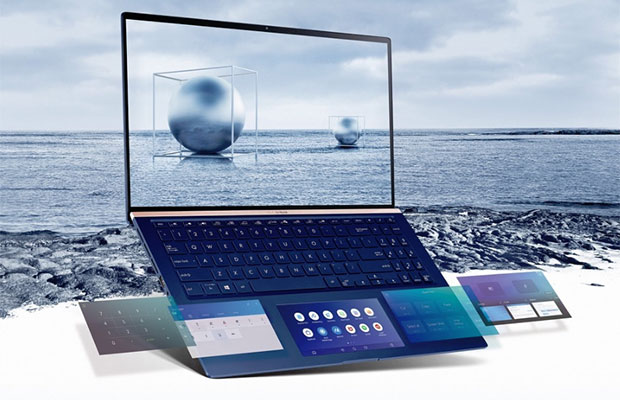
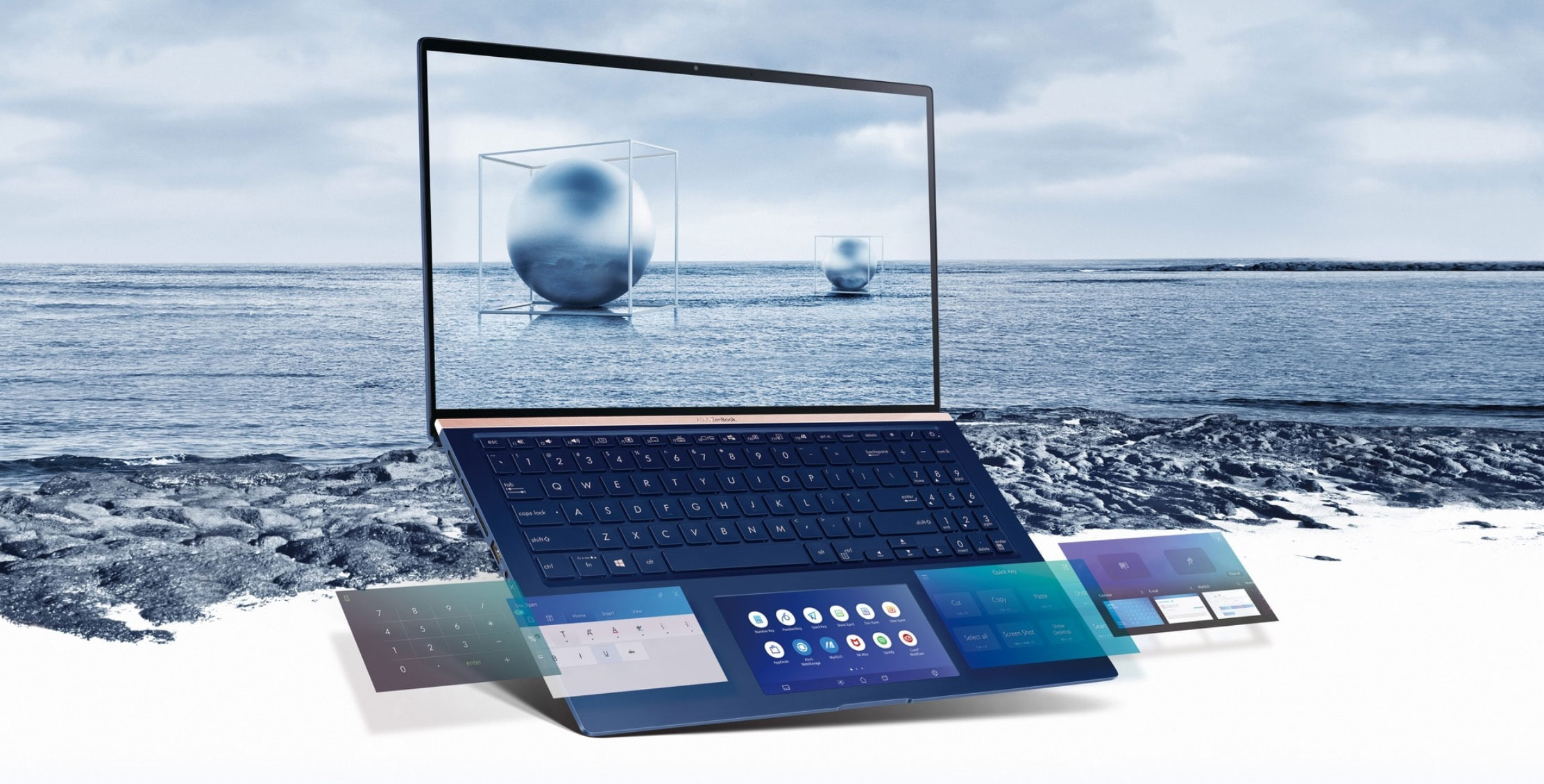
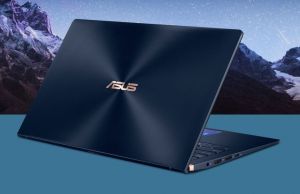
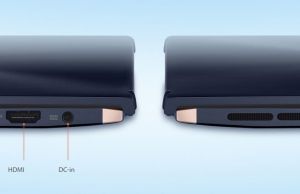
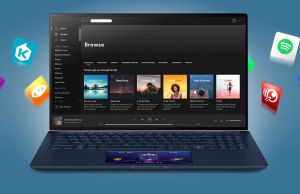

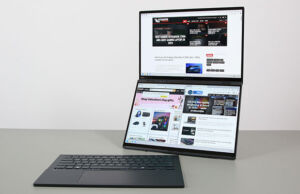
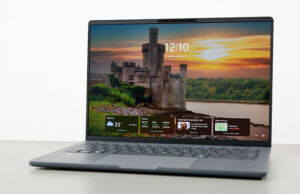
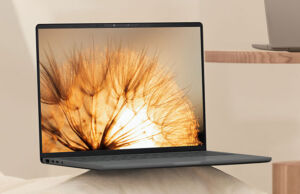
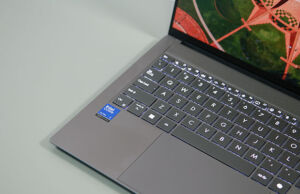
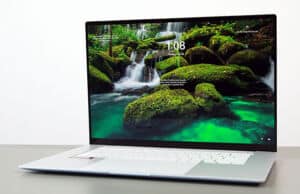





DimTim
May 30, 2019 at 11:37 pm
Hi
I did not understand this section
title indicates model – Asus ZenBook 14 UX434FT but in the review model – Asus ZenBook 14 UX433
will there be a review of the model UX434FT ?
In specified models(UX434FT and UX433) screens is matte as far as I know in the UX433FN model, there are no matte screens
Will there be matte screens in the model UX434FT ?
Thank
Andrei Girbea
May 31, 2019 at 11:35 am
That was a mistake, thanks for noticing it, I've addressed it. Reviews of the updated models will be available in the near future, but can't say exactly when.
Eri
July 14, 2019 at 9:45 pm
These model are average laptop except it is light weight. They definitely make a better choice laptop than Dell for sure. But l hate sad is mainly 512gb storage which is not enough for majority of users today in this modern era. They need to upgrade to 1tb sad as a standard model. Then l will consider to get it. Until then good bye asus. My money will still go for somewhere else not to waste it
Mark - Test Ross
July 16, 2019 at 11:11 am
I disagree, I think 512 is good for SSD for 2019.
SSD's have come a long way, you still have the SD card for more static storage ie media for viewing and playback (SD card do not like demanding workload or multiple app demands) and External HDD/SDD for other stuff.
I like the look of the Blue and the badge Name is nice, I have heard a couple of mentions of Reliability issues (not sure what, just want I have read), so I would be getting some extra warranty.